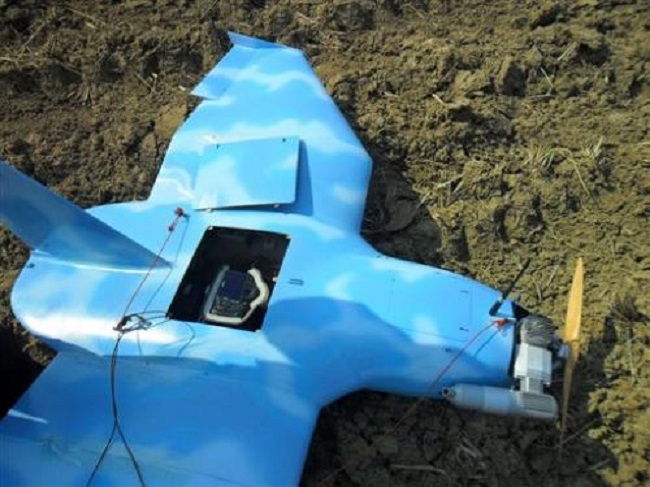Two small drones crash-landed in South Korea near the city of Paju and the island of Baengnyeong,the South Korea Defense Ministry disclosed earlier this month. South Korean military experts speculate this may the start of a grievous new threat as its northern cousin works the kinks out of its low-tech, consumer-digital-cameras-equipped drone solution. “Well, if everyone else has drones, guess we gotta get ‘em too,” said Kim Jong-un in a fictional conversation probably not too far off from the truth.
The crash-landings came after the northern nation flaunted the inclusion of a drone program into its military arsenal; images of a large drone-line aircraft ─ unlike what plummeted in South Korea ─ were hoisted in military parade. If the claims are true, this could be evidence of North Korea’s first automated surveillance mission across South Korean airspace.
Drone design
The two fallen drones are of rudimentary design, with one bearing an uncanny resemblance to a WWII fighter jet, propeller and all. The first drone was equipped with a Canon camera while the other bore a Nikon camera ─ both attainable off the internet for around $950. The cameras can only take still photographs that must be physically retrieved from the memory card; no wireless transmission possible.

The two units were painted sky blue and cost a couple of thousands of dollars to build ─ pocket change compared to the U.S.’s $208 million-per-unit Global Hawk drone. One measured 140 (55 inches) centimeters in length while the other measured 180 centimeters (71 inches).
The lettering on the battery of the drone discovered at Paju and other bits of forensic evidence are what suggested the drones originated in North Korea. South Korean intelligence believes that this particular unit crashed due to engine problems as it bore more than enough full in its reservoir to return home. It was carrying 192 photos of South Korea’s presidential residence and other areas of Seoul on its memory card.
The second drone crashed due to engine problems; it captured images of the two front-line islands of Socheong and Daecheong near the disputed western sea border with the North Korea.
Threat or overreaction?
South Korean defense minister Kim Kwan-jin speculates that these drones do not represent the best the North has to offer, as they’ve been developing unmanned aircrafts since the 1990s. The biggest threat to the South would come in the form of a more advanced drone capable of kamikaze-style, self-destructing drone attack, “the drones' technology is not so impressive, but it could be used for terror if improved—either for a kamikaze attack or an attack with biological or chemical weapons.” Obtaining the technology necessary for the upgrade would not be difficult.
Others experts believe the entire situation is an overreaction. Being large enough to carry a hand grenade, says retired air force general Lee Hee Woo, will make the drone detectable by radar. The two drones that crashed avoided detection on account of their small size and polycarbonate makeup.
Via Phys.org
Advertisement
Learn more about Electronic Products Magazine






